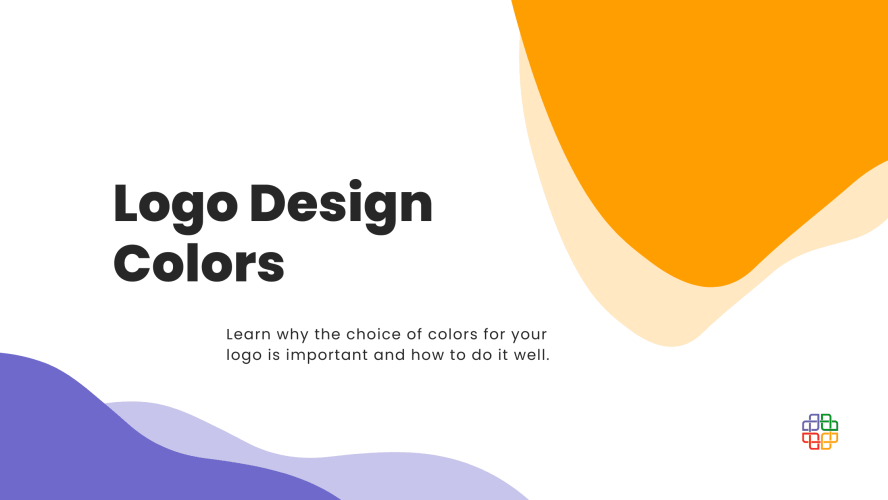I want you to close your eyes for a moment, and think of your favorite fast food restaurant (if you have one). Some of you might immediately imagine KFC’s chicken buckets or McDonald’s french fries. But how does your mind differentiate between these two competitive brands? If you’re a McDonald’s enthusiast, your vision probably included the big yellow “M” letter on the red background. If you prefer KFC, there is a high chance you saw a white and red logo with the characteristic drawing of a man. If you enjoy other fast food, your mind has produced the image accordingly. In this article we will discuss the importance of your logo design in branding and marketing, and answer the question: why do the colors of your logo matter?
Why do the colors of your logo matter?
It might seem like a minor, merely aesthetic choice, but in reality the logo has an actual impact on people’s imagination. And colors, being one of the quickest and easiest to remember for most people, are an integral part of every logo.
Here are the four main reasons why the colors of your logo do matter:
Colors contribute to your brand identity
Oftentimes the whole color scheme of a company revolves around its logo. Choose your colors wisely. You don’t want to get stuck with something irrelevant.
Colors connect you to your clients
The thing you want the most in your branding is to be relatable for your customers. Your logo is that point of connection. People must see it and instantly recognize you from the shape and colors alone. It’s important to remember that people only trust things that they know. Make them know you. Make them associate certain colors with you. The next time they see your logo on a certain product, they will feel at home.
Colors are the manifestation of your brand personality
If the right colors are chosen, your logo will help in deepening the values and personality of your brand. Logo should be the representation of your company’s very heart, condensed in a simple visual form.
Colors carry emotions
The importance of colors is connected to their emotional charge. Humans naturally associate colors with certain emotions. You need to be certain about what group of people you are aiming to attract as well as what impression you want to give them, and choose colors accordingly.
The secret life of colors
Being aware of the importance of your logo’s colors is one thing, but understanding how to use them effectively is a whole separate branch of knowledge. Different colors communicate different emotions. They can spark people to action, soothe them, intrigue them or even make them hungry.
Here is a quick overview of a few colors with their associations and their use in branding:
Red
Examples: Coca-Cola, H&M, Nutella
Emotions: energy, passion, courage, love, excitement
Used to: create urgency, stimulate, caution, encourage, draw attention
Industry: food, sport, entertainment, toys, fire protection

Orange
Examples: Nickelodeon, Fanta, Shell
Emotions: independency, optimism, adventurousness, fun, creativity
Used to: fascinate, draw attention, express freedom, stimulate, entertain
Industry: food, art, sport, transportation, entertainment

Green
Examples: Sprite, Spotify, Starbucks, Hulu
Emotions: safety, stability, harmony, balance, reliability
Used to: encourage, nurture, balance, relax, possess
Industry: banking, farming, NGO, real estate, environment

Purple
Examples: Cadbury, Yahoo!, Milka
Emotions: imagination, spirituality, compassion, sensitivity, mystery
Used to: inspire, spark creativity, promise wisdom, offer luxury, deepen intuition
Industry: beauty, fashion, religion, humanitarian

Blue
Examples: Dell, WordPress, Boeing, Twitter
Emotions: trust, confidence, ambition, openness
Used to: relax, calm, balance
Industry: technology, aviation

Silver
Examples: Mercedes-Benz, Honda, Apple
Emotions: wealth, grace, elegance
Used to: balance, neutralize, calm
Industry: technology-related, jewelry, automotive

The magic of iconic logos
When you’re learning something new it’s always worth taking a look at others who faced the same challenge and nailed it. The most famous brands in the world have logos that we can recognize instantly. You’re driving on a highway and from the distance you see a building with a big yellow word on a blue background. You assume it’s IKEA. You unlock your mobile’s home screen and you don’t have to read the names of applications, you know that the green circle will lead you to Spotify, and the white bird on a blue background means Twitter.
We smoothly navigate through the world of symbols. To make your brand an organic part of this world you need to first learn the language of colors. Your best teachers would be real-life examples. Of course there is no one universal recipe for designing a successful logo. Every brand should find its own uniqueness, and create a logo that will portray that. But taking a closer look at the surrounding brands and their logos is a good place to start.
When it comes to famous brands’ logos they have a few things in common. They are simple, memorable, and their colors are perfectly matched with each other as well as with the brand’s message. The biggest brands in the world usually use only two colors in their logo. Think of Facebook, Fedex, Starbucks, IKEA, Dell, Netflix or McDonald’s. They all follow the two-colors strategy. Only about 5% of brands are using three or more colors in their logo.
The reason for this is rather practical – it’s a lot easier to successfully combine two colors than three. Logo often dictates the whole color scheme of your brand. If you get stuck with too many colors it will be very difficult for you to create aesthetically pleasing promotional materials for your brand (trust us, the four colors in our logo are quite troublesome). Less colors are also easier to remember for potential customers.
The alchemy of your logo
Now that you know why you should care about your logo and its colors, let’s get to the point of how you can actually choose your colors.
First, think of what color you like. Your personal taste of course shouldn’t determine your branding decisions. However, it’s always nice to start from what you like and enjoy, rather than create a logo that you’ll be secretly hating. So, choose the color of your liking and ask yourself this question: “What emotions does this color evoke in me?”
Let’s say you’ve chosen blue. You like blue because you find it calming and relaxing. If you’re creating a logo for a spa salon, blue might successfully reflect your brand personality. But if your logo is going to represent a BBQ restaurant, blue won’t be a good choice. Instead of increasing customers’ appetite, it will calm them down and cool their enthusiasm.
Remember that every color has multiple associations. You might like blue for a different reason than its peacefulness. Maybe it reminds you of the color of the skies. If you’re creating a logo for an airline company, blue will be a great match. However, if you wish to promote an exclusive jewelry brand, you might want to choose silver or gold.
There are a few basic steps that you can follow, while composing the color palette for your logo:
- Choose 2, maximally 3 colors that go well together. You can research optimal color combinations to get inspired.
- Pick your base color. It’s the main character, the one that will be dominating your logo’s design.
- Pick your accent color. It needs to match with the base color.
- Pick your neutral color. It doesn’t necessarily have to be included in your logo (though it often is), but it becomes really useful in the process of creating your promotional materials, etc. Just like the name implies, you should choose from neutral colors, such as white, beige, gray, or sometimes black, if the brighter colors are too subtle for your brand.
And voila! Your logo color scheme is ready!
Before we wrap this article up, there is just one more thing that needs to be said. Creating a logo is a form of graphic art. And, as we all probably know, art tends to be perceived differently by different people. The matter of taste is purely subjective and it’s practically impossible to please everyone. So don’t waste your time and energy trying. Focus on what you like as well as what your target audience likes. It’s them that you want to appeal to.
Happy designing!
Read more
Why Do You Need Brand Personality?
New Canva Features – Canva Create 2022
Website Design: 10 Common Mistakes That You Will Avoid (After Reading This Post)




